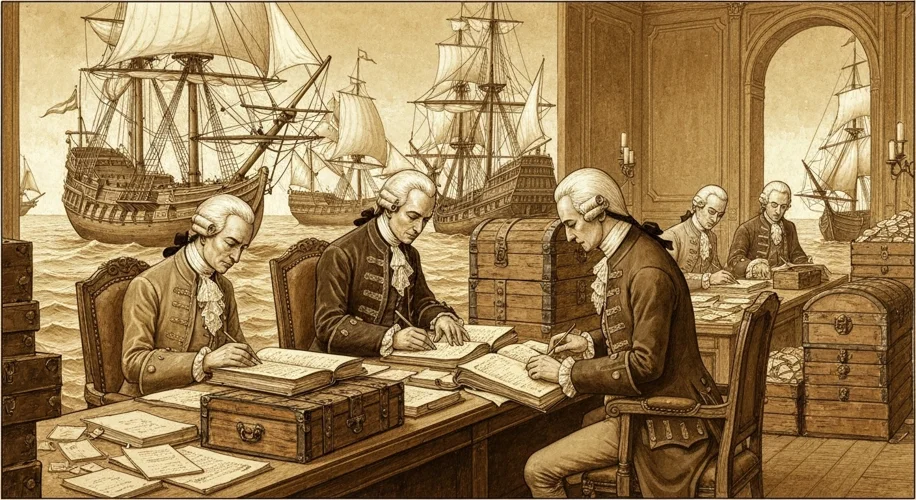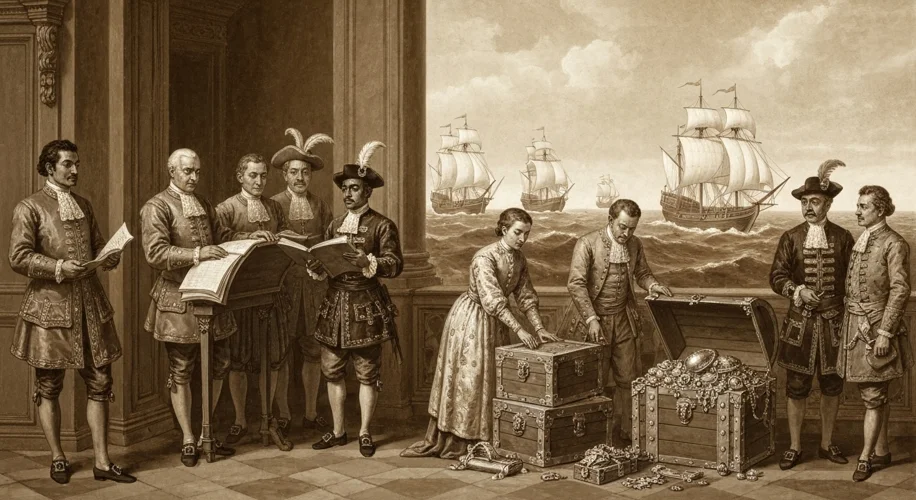The British Empire, a vast network of colonies and dominions that once spanned the globe, was not built on goodwill alone. It was a monumental enterprise, financed and managed through intricate, often brutal, economic mechanisms. “Imperial Receipts” delves into the financial heartbeat of this colossal entity, exploring how its expansion was funded, the costs incurred, and the profound impact on both the rulers and the ruled.
From the moment the East India Company began its tentative trading ventures in India in the early 17th century, the acquisition and maintenance of overseas territories were viewed through a distinctly financial lens. The pursuit of profit was intrinsically linked to the ambition of empire. This wasn’t simply about trade; it was about securing resources, establishing markets, and projecting power, all of which required significant capital investment.
The initial funding for ventures like those of the East India Company often came from private investors, wealthy merchants, and even the Crown itself. Shares were sold, loans were taken, and risk was pooled. As these companies grew in power and scope, their “receipts” – a term encompassing not just revenue but the entire financial apparatus – became increasingly sophisticated. These weren’t just passive income streams; they were actively managed and often ruthlessly extracted.

A key mechanism for funding imperial expansion was the exploitation of colonial resources. Raw materials like cotton, sugar, timber, and minerals were extracted from colonized lands, often at minimal cost to the imperial power. These resources were then processed in Britain, adding value and generating further profits. The profits from these ventures were reinvested, fueling further expansion and solidifying the empire’s economic grip.
Taxation was another crucial “receipt.” Colonial populations were subjected to various forms of taxation, from land revenue and customs duties to direct taxes on individuals. These taxes were often levied to pay for the very administration and military presence that maintained imperial control. In essence, the colonized populations often funded their own subjugation.
Consider the Indian Mutiny of 1857. While often viewed as a military and political upheaval, its roots were deeply economic. Grievances over land confiscation, heavy taxation, and the disruption of traditional economies fueled the rebellion. The British response, however, involved massive expenditure, further straining the imperial budget and leading to increased taxation on the Indian populace to cover the costs of the conflict and its aftermath.
The management of this vast financial empire required a complex bureaucracy. Treasury departments, colonial administrators, and financial institutions all played a role. The Bank of England, for instance, became a central pillar in managing the flow of capital and facilitating international trade that underpinned imperial power. The “receipts” of empire were not just about raw profit; they were about the strategic deployment of capital to maintain dominance.
The impact on the colonized was often devastating. Economies were reshaped to serve the needs of the empire, leading to dependency and the neglect of local industries. Traditional social structures were disrupted, and vast wealth was siphoned away, hindering the development of the colonized regions. The “profit” for Britain often came at the direct expense of the prosperity and well-being of its subjects.
Conversely, the influx of wealth and resources from the empire fueled Britain’s industrial revolution and contributed to its rise as a global superpower. It funded infrastructure projects, enriched industrialists, and shaped the nation’s identity. The “receipts” of empire were, for the colonizer, a vital engine of growth and power.
Understanding “Imperial Receipts” is not merely an academic exercise. It’s about recognizing the tangible economic forces that shaped the modern world, the flows of wealth that built one part of the globe while often depleting another. It’s a reminder that history is not just made of battles and treaties, but of ledgers, taxes, and the relentless pursuit of economic advantage that powered the engines of empire.

